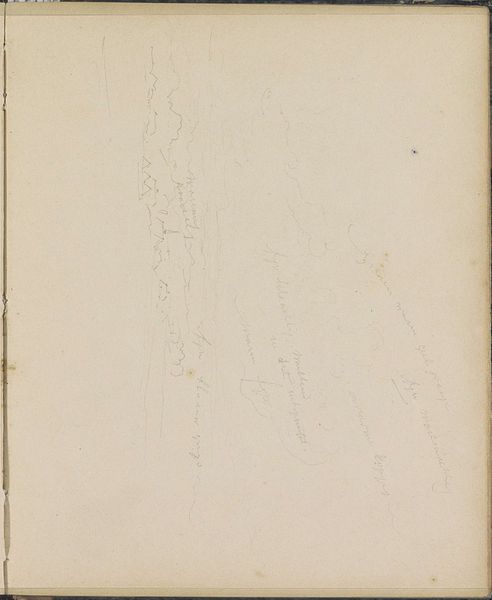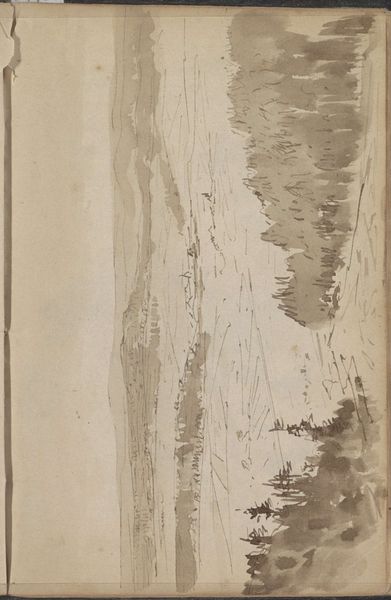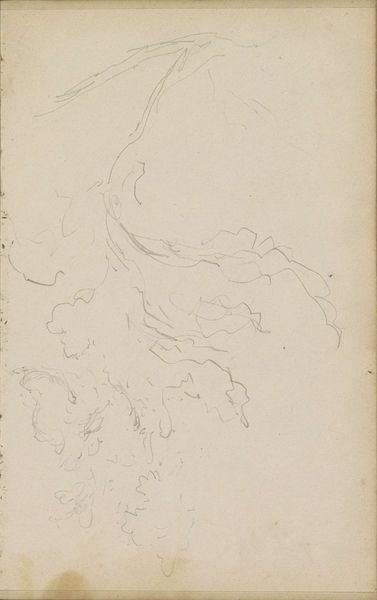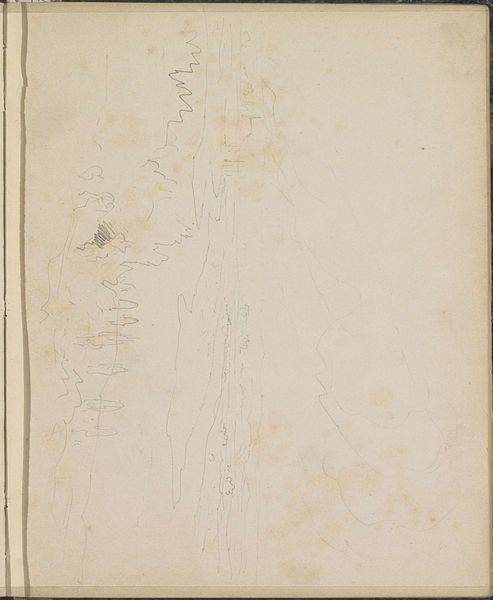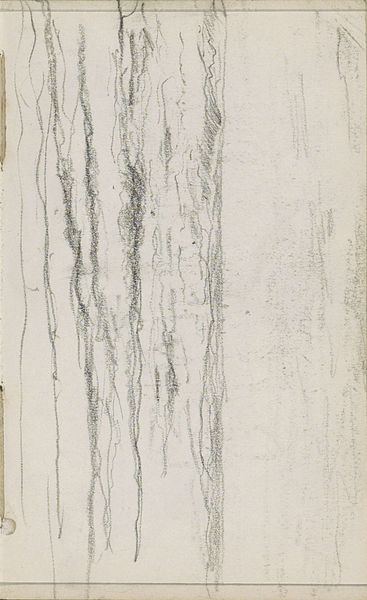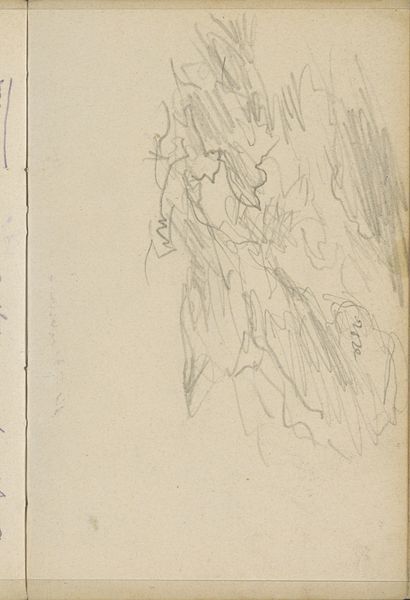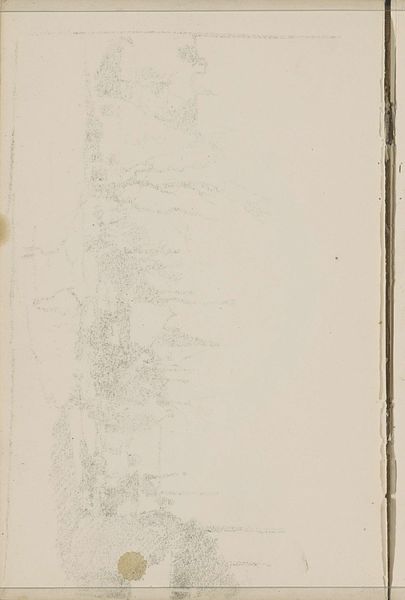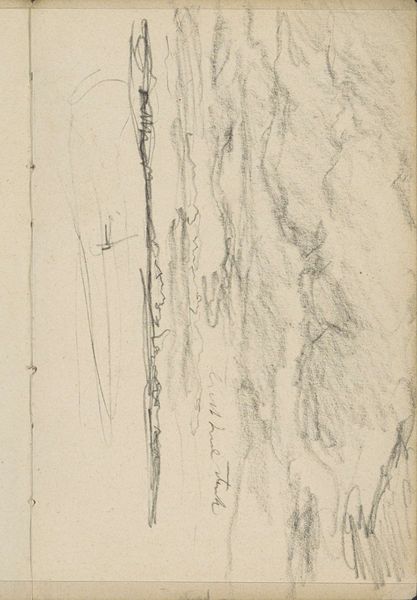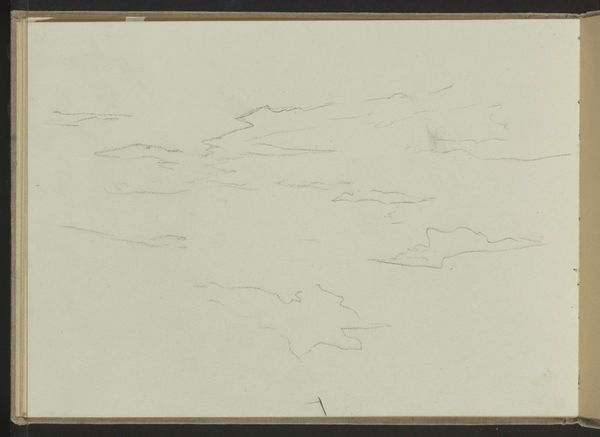
drawing, pencil
#
drawing
#
toned paper
#
light pencil work
#
pen sketch
#
pencil sketch
#
incomplete sketchy
#
landscape
#
personal sketchbook
#
ink drawing experimentation
#
romanticism
#
pen-ink sketch
#
pencil
#
sketchbook drawing
#
sketchbook art
Copyright: Rijks Museum: Open Domain
Editor: This is "Landschap bij Kleef," a landscape drawing by Johannes Tavenraat, dating from around 1841 to 1853. It’s currently held at the Rijksmuseum. The delicate pencil and ink work gives it such a transient feel, like capturing a fleeting moment. What catches your eye most about this piece? Curator: What interests me is how this sketch embodies the Romantic era's changing relationship with nature and the socio-political implications. Look at how Tavenraat prioritizes the feeling of the place over its precise geographical details. The atmospheric perspective, though subtly rendered, conveys a sense of the sublime, a key theme in Romanticism. How do you think the rise of nationalism in the 19th century played a role in artists depicting and idealizing specific landscapes like this? Editor: That's interesting. I guess I hadn't really considered how the act of drawing a landscape could be a statement in itself, almost like claiming it. So, by choosing to represent this particular landscape, he is inadvertently supporting that emerging national identity. Curator: Exactly. Also, think about the market for landscape art during this period. Who were the patrons, and what values did they project onto these scenes? These seemingly innocent depictions often reinforced certain ideas about land ownership and national pride. It’s important to remember museums influence taste, too. How do institutions validate such pieces? Editor: I hadn’t thought of it that way. So, seeing this as just a pretty landscape misses all that cultural weight it carries? I will remember to check its origin when appreciating works. Curator: Precisely. Art isn't made in a vacuum, and institutions frame it. Examining historical context gives a whole new perspective. Editor: Absolutely, I am always amazed by the stories and insight an object gains through discussion, it's fascinating.
Comments
No comments
Be the first to comment and join the conversation on the ultimate creative platform.
